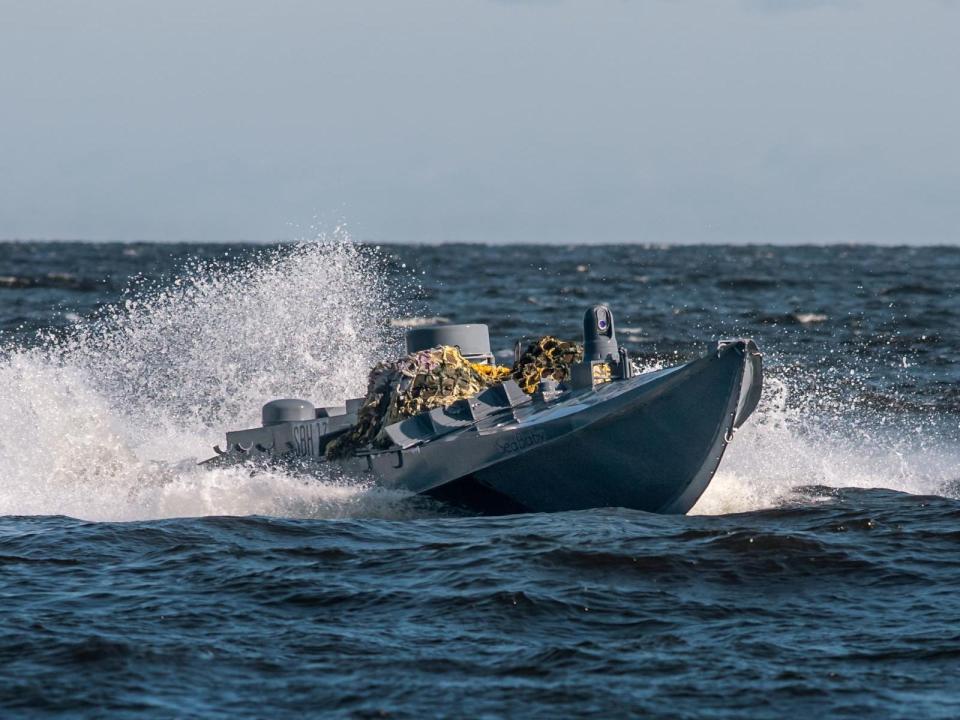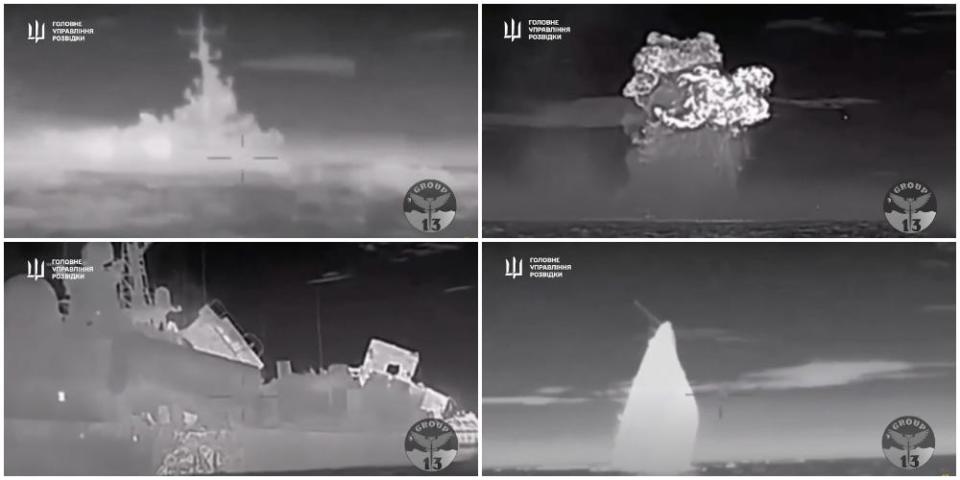Going after Russian warships feels like 'hunting prey,' says a Ukrainian general overseeing exploding naval drone operations
Ukraine has relied heavily on its arsenal of naval drones to cause headaches for Russia's Black Sea Fleet.
These explosive systems have been used to damage and destroy dozens of warships.
A Ukrainian general overseeing some of the ops said it's like "hunting prey."
For at least one Ukrainian general, going after Russian warships with exploding drone boats is more than just hitting the enemy.
"You feel like a hunter, hunting prey. As long as the enemy is a beast, we will hunt it," Brig. Gen. Ivan Lukashevych said. "You can only communicate with a person, not with an animal that is trying to kill you."
Lukashevych serves in the Security Service of Ukraine, or SBU, and leads a team responsible for carrying out naval drone attacks on Russian warships and infrastructure in and around the Black Sea.
"For the head of an operation or for a marine drone operator, emotions are superfluous. Under their influence, you can make a mistake," he said in translated remarks to Business Insider. "We can't afford that — we need a sober mind."

Lukashevych said that as part of these efforts, the SBU is working "to reduce the human factor to a minimum."
To do so, technology specialists from Ukraine's Ministry of Digital Transformation have teamed up with the security service to implement artificial intelligence in planning naval operations and analyzing the overall environment of the Black Sea.
From the start of Russia's full-scale invasion more than two years ago, Ukraine has lacked a proper navy. To compensate for this deficiency, the country sought to develop what it calls "the world's first fleet of naval drones." These deadly systems were first introduced in 2022 as Kyiv looked to weaken Moscow's grip on the Black Sea.
"We analyzed how best to get to the Russian fleet; what means and methods would be appropriate. That's how the idea to make an unmanned vehicle gradually emerged," Lukashevych said.

In the environments where the drones would operate, "the Russians have no technical means of detecting us," the general said. "Echolocation and radar do not work here, and we'd decided for the naval drones to be no higher than one meter and no deeper than one meter."
Ukraine's naval drone program is focused on an unmanned surface vessel, or USV, called Sea Baby, and Kyiv is currently trying to build up an arsenal of these systems for the SBU, including through donations and fundraising.
These drones have been used to wreak havoc on Russia's Black Sea Fleet — damaging and destroying warships and hitting critical infrastructure in the region. While Moscow has tried to adapt to the threat, and has even found some success in defending against the drones, it ultimately has been unable to stop the drones from wounding its fleet.

As a result of these devastating attacks, Ukraine has driven some of the Black Sea Fleet away from its headquarters in Sevastopol, a city in the southwestern corner of the occupied Crimean peninsula, across the sea to Novorossiysk in western Russia. Kyiv's forces have also opened up a maritime corridor, allowing exports to resume and securing another one of its aims.
The Sea Baby drones, meanwhile, have evolved a lot from the original models that were deployed in 2022, Lukashevych said. They have since been outfitted with larger warheads, are now more durable so they can sail in taller waves, and are capable of covering a distance of roughly 600 miles, nearly three times as far as that between Odesa, a coastal city in southern Ukraine, and Sevastopol, along the Crimean coast.
Lukashevych said Russia is very much aware of the threat posed by the Sea Babies, but Ukraine is constantly trying to stay several steps ahead of Moscow. The SBU, he said, is "constantly testing and improving its inventions to be forward-thinking."
"We are at war and fulfill the task set" by Ukrainian President Volodymyr Zelenskyy, he added. "We are not just driving the enemy fleet away, but destroying it."
Read the original article on Business Insider


